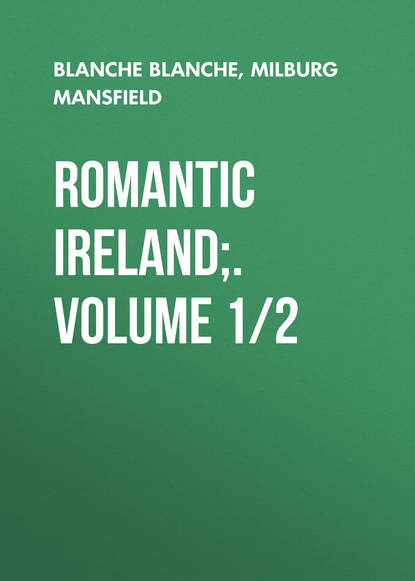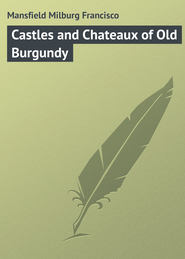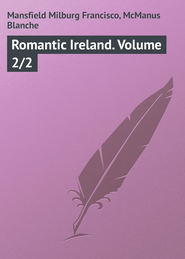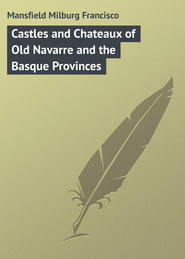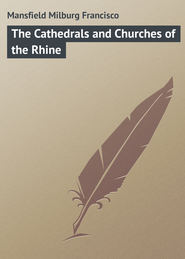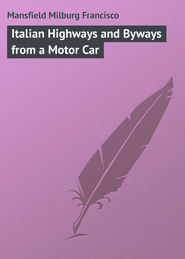По всем вопросам обращайтесь на: info@litportal.ru
(©) 2003-2024.
✖
Romantic Ireland;. Volume 1/2
Настройки чтения
Размер шрифта
Высота строк
Поля
The woollen industry was given a great impetus in 1667 by the Duke of Ormonde, who induced five hundred Walloon families to settle at Clonmell, at Killarney, and at Carrick-on-Suir; but in 1698 the English manufacturers persuaded the Irish Parliament to prohibit the exportation of woollens.
From Dean Swift we learn that by this act twelve thousand families were thrown out of employment in and near Dublin, and thirty thousand more elsewhere.
It is of late years only that the cottage handicrafts, knitting, spinning, weaving of homespuns, and lace-making, have been given the great impetus which has now made them established industries, like the cottage cutlers of Barmen and Essen, in Germany, who fashion knife-blades from the crude product which they obtain from the large steel works near by.
Formerly paper-making was very extensively conducted in the county of Dublin; but this is no longer the case. Who does not know the famous Irish linen? Strange to say, the best quality was known as Royal Irish linen. This assuredly was an effort on the part of some astute Irishman to capture outside trade, but his astuteness apparently did not extend to other things.
The dictionaries received a new word in Balbriggan, which was the name of the cotton hosiery first made a hundred and fifty or more years ago at Balbriggan.
Irish whiskey distilleries and the breweries of porter and stout have come to be recognized as premier establishments in their line, and, whatever the opponents of the liquor trade may say, these industries have done Ireland much good. Far more good, be it acknowledged, than that other brewer, Cromwell, ever did for it.
The shipbuilding industry of Belfast ranks among the first establishments, if it is not the very first, in the world, and the allied industries, which produce ropes, cables, chains, and rigging, are likewise foremost in their class. These are mainly centred around Belfast, but an echo is heard at Londonderry, on the north coast.
Porcelain of a rare and unique quality is manufactured at Belleek. So frail and delicate and so translucent is this ware that it stands quite in a class by itself.
The paramount industry of Ireland is the spinning and weaving of linen and flax, mostly centred around Belfast. The great linen ware-houses of Belfast, with branches throughout the English-speaking world, and even on the Continent, are almost household names, and no product of a similar nature elsewhere produced at all enters into competition with the real Irish product. Besides the great establishments at Belfast, there are others, nearly as great, at Ballymena, Londonderry, Coleraine, and Lisburn.
This great industry grew up at the summary closing of the woollen mills, prospered, and, if at first it did not take the place entirely of the woollen industry, it did so finally.
In the mid-nineteenth century it has already reached huge proportions, and, while to-day the public undoubtedly buys a great deal that is not linen in the expectation that it is linen, and a great deal of linen that is not Irish linen in the hope or the belief that it is Irish linen, there is no question but that the trade has already advanced beyond the point where it was when it stood alone and supreme in the world.
The trade has reached its present magnitude from the very small beginnings of a Huguenot refugee named Crommelin, who settled originally at Lisburn.
The superiority of Irish linen is due primarily to the bleaching, which, of itself, depends upon the water and atmosphere, which at Belfast and the other places mentioned is apparently not equalled elsewhere in the world.
To get the same results, it is said that a certain German manufacturer buys Irish yarn, – that is, linen spun in Ireland, – weaves it into cloth in Bohemia, sends it back to Belfast to be bleached, finally brings it back to his establishment in Germany, and sells it as – what?
The most varied and most successful cottage industries are at Limerick, Carrickmacross, Cork, Youghal, Kinsale, Crosshaven, Ardora, and Clones. Their specialty is lace of a delicate and elegant variety.
The cottage woollens are mostly made in Donegal and Connemara, while the art of embroidery is followed most extensively at Belfast, Dublin, Dalkey, Garryhill, Sligo, Strabane, and Ballintra.
There is one phase of trade that the Irish have neglected to develop of late, – the fisheries. More or less philosophically, as they think, they lay this to the Scotch, who are much more successful at the industry than themselves. This is not the fault of the Scotch; it is the folly of the Irish. At any rate, there is an inexhaustible supply of mackerel, herring, cod, hake, sole, turbot, lobsters, and even oysters to be found on the south and southwest coast of Ireland.
In the fifteenth and sixteenth centuries this was a trade which was worked, and successfully worked, as records show, by Spaniards, Dutch and French fishermen, who came from their own fishing-grounds to angle in these more plethoric Irish waters.
It was only in the nineteenth century that the Irish took up the industry in at all a commensurate manner, and by the famine years of the late forties they had 19,833 vessels, manned by 130,000 men and boys, in the trade. Then it steadily declined through succeeding years until 1894. In 1900 there were only 6,500 registered boats, employing 25,360 men, and the harvest which they gathered from the sea had but the value of £300,000. Truly this is a sad tale, and not a creditable one. The chief fishing stations are at Kinsale, Baltimore, Valentia, and Bearhaven. There are salmon to be had in almost every river estuary, and the taking of them has not been neglected, as has deep-water fishing.
The chief industry of most countries is perhaps agriculture. Even in Ireland crops are raised, – crops of a sort must be raised, – but they are grown to nothing like the extent that they ought to be.
Probably Ireland’s record is not as bad as England’s in this respect; but landlordism, whatever that vague term may really mean, is certainly responsible for the minute proportions of this industry. In 1831 1,270,000 were engaged in agriculture, approximately 65½ per cent. of the population; in 1891, 49½ per cent., showing plainly that agriculture in Ireland is rapidly on the down grade.
The most fertile counties are Tipperary and Limerick; Kerry is generally poor; but “Mounster,” as Spenser called it, was “of the sweetest soyle of Ireland.”
Cattle-raising in Ireland is truly preëminent, as bald, unromantic statistics show. In Ireland there are 138 horses per thousand of the population. In England, but 36 only. There are 996 cattle in Ireland as against 152 in England; 951 sheep as against 511; and 278 pigs as against 69.
The small farmer in Ireland is, it is true, uneducated to a surprising degree. He knows nothing of rotation of crops, and cultivates seldom more than two varieties. Artificial enrichment of the soil is a profound mystery to him, and he apparently would rather work a piece of reclaimed peat-bog than the most fertile valley that ever grew the products of the field.
Truth to tell, the genuine Irish peasant hates the cultivation of the soil; he dislikes to dig in the earth, as he does to fish in the sea; but he rejoices in cattle-raising, and, above all, cattle-trading. He likes to drive them to market; he makes a regular holiday of it, and so do the rest of his family, as one who has ever met such a composite caravan on the road well knows.
It is said that twenty thousand Irish go to England every autumn for the harvest. It seems a pity that these twenty thousand workers could not have the opportunity of working at home. The author does not pretend to explain this; he recounts it simply as current rumour, which doubtless could be authenticated.
CHAPTER VIII.
DUBLIN AND ABOUT THERE
THE environment of Dublin, so far as its immediate surroundings are concerned, is exceedingly attractive to the jaded inhabitant of brick and mortar cities.
Phœnix Park, belonging anciently to the Knights Templars, is more beautiful, as a city park, than those possessed by any other city of the size of Dublin in the British Isles, and is, moreover, of great extent. It is densely wooded, has lovely glades, and is plentifully stocked with herds of deer, who seem unconsciously to group themselves picturesquely at all times.
It is in no sense grand, nor, indeed, are the views of the lovely country lying immediately to the southward; but the distant views of the Wicklow peaks are full of quiet, restful beauty, which must help to make life in a great centre of population, such as Dublin, livable at all seasons of the year.
The Viceregal Lodge is in Phœnix Park, and near it is the spot where Lord Frederick Cavendish and Mr. Burke were walking together on the night of May 6, 1882, when they were assassinated by the “Invincibles.”
The “Fifteen Acres,” where now horses are exercised, was a very favourite duelling-ground in olden times. A local description of this “bloody ground” states:
“There is not a single one of its acres that has not been stained with blood over and over again, in those gray mornings of the eighteenth century, when Dublin beaux, half-sobered after a night’s debauch, used to confront one another in the dew-drenched grass, and startle the huddled herds of deer with the deadly crack of pistols at twelve paces.”
Beyond Phœnix Park is Lucan, four miles up the Liffey, near the river’s celebrated salmon-leap.
Clondalkin, six miles from Dublin, possesses one of the finest and most perfect round towers in Ireland, eighty feet in height, and forty-five in circumference at the base.
The Falls of the Liffey, at Poula-Phooka, twenty miles from town, flow under a graceful viaduct. Here the foam-whitened river casts itself down a succession of rocky leaps, and through a richly wooded gorge, into the smoother plain below. This is a scenic gem, such as amateur photographers love, and its picturings are found in the album of almost every Irish traveller. Its name enshrines one of the best known of the many Celtic fairy myths, – that of the Phooka. Certainly, the wild, lofty defile of splintered rock, through which the fall leaps down, must have been exactly the sort of place to allure the goblin horse that had such an unpleasant fancy for breaking people’s necks.
The legend of the Phooka is one familiar in many forms to all lovers of folk-lore. It is claimed to be of Celtic origin, but with equal assurance it is said to be Norse, and again Indian. The apparition is a weird ghost-like horse-shape, not unlike the steed which Ichabod Crane saw mounted by a headless horseman.
Kingstown, seven miles from Dublin, has no great interest for the lover of artistic or historic shrines, though the view of its harbour, with its cross-channel shipping, its fishing-boats, and its long, jutting piers, composes itself gaily enough, on a bright summer’s day, into a pleasing picture.
Originally named Dunleary, the town received its present title in 1821, after the departure of George IV. An obelisk, surmounted by a crown, and placed upon four stone balls, stands near the harbour entrance, and commemorates – what? The king’s coming? Not at all. He landed at Howth, and no one, apparently, thought that incident worthy of a memorial. The Kingstown obelisk commemorates his departure from his Irish dominions.
This seems significant, but it will not do to condemn Irish hospitality on this score. Perhaps it is an attempt at humour. If so, it is not wholly unsuccessful.
Just north of Dublin are two spots famed alike of history and legend, – at least most of the local story-tellers’ tales sound like legends, – Clontarf and Howth.
As the Hill of Howth is one of the first of Ireland’s landmarks which come to the vision of the majority of visitors from England, it may perhaps be permissible to include the following lines here. They were written many years ago by a local poet whose, name is lost in obscurity, but whose verse is sufficiently apropos to-day to need no qualifying comment:
“Well might an artist travel from afar,
To view the structure of a low-backed car;
A downy mattress on the car is laid,
The father sits beside his tender maid.
Some back to back, some side to side are placed,
The children in the centre interlaced.
By dozens thus, full many a Sunday morn,
With dangling legs the jovial crowd is borne;
Clontarf they seek, or Howth’s aspiring brow,
Or Leixlip smiling on the stream below.”
“The Hill” is a bold peninsula at the mouth of Dublin Bay, above whose waters, and those of the Irish Sea, the rugged promontory rises to the height of 563 feet. The whole mount abounds in precipitous rocky formations, blended most artistically with fields of heather and of greensward in a manner apparently possible only in Ireland. From the cliffs over-looking the sea, the outlook embraces the counties of Dublin, Meath, and Louth; the Mourne Mountains and County Down, Ireland’s Eye and Lambay Island; while to the south loom the Wicklow Hills, Bray Head, Sugar Loaf Mountain, Dalkey Island, Kingstown Harbour, and Dublin, showing a variety of form which contrasts strangely with the placid sea, sky, and hills.
Howth itself is a village of one long, rambling street, – or was; of late it has grown more pretentious, and has thereby lost some of its pristine charm.
From Dean Swift we learn that by this act twelve thousand families were thrown out of employment in and near Dublin, and thirty thousand more elsewhere.
It is of late years only that the cottage handicrafts, knitting, spinning, weaving of homespuns, and lace-making, have been given the great impetus which has now made them established industries, like the cottage cutlers of Barmen and Essen, in Germany, who fashion knife-blades from the crude product which they obtain from the large steel works near by.
Formerly paper-making was very extensively conducted in the county of Dublin; but this is no longer the case. Who does not know the famous Irish linen? Strange to say, the best quality was known as Royal Irish linen. This assuredly was an effort on the part of some astute Irishman to capture outside trade, but his astuteness apparently did not extend to other things.
The dictionaries received a new word in Balbriggan, which was the name of the cotton hosiery first made a hundred and fifty or more years ago at Balbriggan.
Irish whiskey distilleries and the breweries of porter and stout have come to be recognized as premier establishments in their line, and, whatever the opponents of the liquor trade may say, these industries have done Ireland much good. Far more good, be it acknowledged, than that other brewer, Cromwell, ever did for it.
The shipbuilding industry of Belfast ranks among the first establishments, if it is not the very first, in the world, and the allied industries, which produce ropes, cables, chains, and rigging, are likewise foremost in their class. These are mainly centred around Belfast, but an echo is heard at Londonderry, on the north coast.
Porcelain of a rare and unique quality is manufactured at Belleek. So frail and delicate and so translucent is this ware that it stands quite in a class by itself.
The paramount industry of Ireland is the spinning and weaving of linen and flax, mostly centred around Belfast. The great linen ware-houses of Belfast, with branches throughout the English-speaking world, and even on the Continent, are almost household names, and no product of a similar nature elsewhere produced at all enters into competition with the real Irish product. Besides the great establishments at Belfast, there are others, nearly as great, at Ballymena, Londonderry, Coleraine, and Lisburn.
This great industry grew up at the summary closing of the woollen mills, prospered, and, if at first it did not take the place entirely of the woollen industry, it did so finally.
In the mid-nineteenth century it has already reached huge proportions, and, while to-day the public undoubtedly buys a great deal that is not linen in the expectation that it is linen, and a great deal of linen that is not Irish linen in the hope or the belief that it is Irish linen, there is no question but that the trade has already advanced beyond the point where it was when it stood alone and supreme in the world.
The trade has reached its present magnitude from the very small beginnings of a Huguenot refugee named Crommelin, who settled originally at Lisburn.
The superiority of Irish linen is due primarily to the bleaching, which, of itself, depends upon the water and atmosphere, which at Belfast and the other places mentioned is apparently not equalled elsewhere in the world.
To get the same results, it is said that a certain German manufacturer buys Irish yarn, – that is, linen spun in Ireland, – weaves it into cloth in Bohemia, sends it back to Belfast to be bleached, finally brings it back to his establishment in Germany, and sells it as – what?
The most varied and most successful cottage industries are at Limerick, Carrickmacross, Cork, Youghal, Kinsale, Crosshaven, Ardora, and Clones. Their specialty is lace of a delicate and elegant variety.
The cottage woollens are mostly made in Donegal and Connemara, while the art of embroidery is followed most extensively at Belfast, Dublin, Dalkey, Garryhill, Sligo, Strabane, and Ballintra.
There is one phase of trade that the Irish have neglected to develop of late, – the fisheries. More or less philosophically, as they think, they lay this to the Scotch, who are much more successful at the industry than themselves. This is not the fault of the Scotch; it is the folly of the Irish. At any rate, there is an inexhaustible supply of mackerel, herring, cod, hake, sole, turbot, lobsters, and even oysters to be found on the south and southwest coast of Ireland.
In the fifteenth and sixteenth centuries this was a trade which was worked, and successfully worked, as records show, by Spaniards, Dutch and French fishermen, who came from their own fishing-grounds to angle in these more plethoric Irish waters.
It was only in the nineteenth century that the Irish took up the industry in at all a commensurate manner, and by the famine years of the late forties they had 19,833 vessels, manned by 130,000 men and boys, in the trade. Then it steadily declined through succeeding years until 1894. In 1900 there were only 6,500 registered boats, employing 25,360 men, and the harvest which they gathered from the sea had but the value of £300,000. Truly this is a sad tale, and not a creditable one. The chief fishing stations are at Kinsale, Baltimore, Valentia, and Bearhaven. There are salmon to be had in almost every river estuary, and the taking of them has not been neglected, as has deep-water fishing.
The chief industry of most countries is perhaps agriculture. Even in Ireland crops are raised, – crops of a sort must be raised, – but they are grown to nothing like the extent that they ought to be.
Probably Ireland’s record is not as bad as England’s in this respect; but landlordism, whatever that vague term may really mean, is certainly responsible for the minute proportions of this industry. In 1831 1,270,000 were engaged in agriculture, approximately 65½ per cent. of the population; in 1891, 49½ per cent., showing plainly that agriculture in Ireland is rapidly on the down grade.
The most fertile counties are Tipperary and Limerick; Kerry is generally poor; but “Mounster,” as Spenser called it, was “of the sweetest soyle of Ireland.”
Cattle-raising in Ireland is truly preëminent, as bald, unromantic statistics show. In Ireland there are 138 horses per thousand of the population. In England, but 36 only. There are 996 cattle in Ireland as against 152 in England; 951 sheep as against 511; and 278 pigs as against 69.
The small farmer in Ireland is, it is true, uneducated to a surprising degree. He knows nothing of rotation of crops, and cultivates seldom more than two varieties. Artificial enrichment of the soil is a profound mystery to him, and he apparently would rather work a piece of reclaimed peat-bog than the most fertile valley that ever grew the products of the field.
Truth to tell, the genuine Irish peasant hates the cultivation of the soil; he dislikes to dig in the earth, as he does to fish in the sea; but he rejoices in cattle-raising, and, above all, cattle-trading. He likes to drive them to market; he makes a regular holiday of it, and so do the rest of his family, as one who has ever met such a composite caravan on the road well knows.
It is said that twenty thousand Irish go to England every autumn for the harvest. It seems a pity that these twenty thousand workers could not have the opportunity of working at home. The author does not pretend to explain this; he recounts it simply as current rumour, which doubtless could be authenticated.
CHAPTER VIII.
DUBLIN AND ABOUT THERE
THE environment of Dublin, so far as its immediate surroundings are concerned, is exceedingly attractive to the jaded inhabitant of brick and mortar cities.
Phœnix Park, belonging anciently to the Knights Templars, is more beautiful, as a city park, than those possessed by any other city of the size of Dublin in the British Isles, and is, moreover, of great extent. It is densely wooded, has lovely glades, and is plentifully stocked with herds of deer, who seem unconsciously to group themselves picturesquely at all times.
It is in no sense grand, nor, indeed, are the views of the lovely country lying immediately to the southward; but the distant views of the Wicklow peaks are full of quiet, restful beauty, which must help to make life in a great centre of population, such as Dublin, livable at all seasons of the year.
The Viceregal Lodge is in Phœnix Park, and near it is the spot where Lord Frederick Cavendish and Mr. Burke were walking together on the night of May 6, 1882, when they were assassinated by the “Invincibles.”
The “Fifteen Acres,” where now horses are exercised, was a very favourite duelling-ground in olden times. A local description of this “bloody ground” states:
“There is not a single one of its acres that has not been stained with blood over and over again, in those gray mornings of the eighteenth century, when Dublin beaux, half-sobered after a night’s debauch, used to confront one another in the dew-drenched grass, and startle the huddled herds of deer with the deadly crack of pistols at twelve paces.”
Beyond Phœnix Park is Lucan, four miles up the Liffey, near the river’s celebrated salmon-leap.
Clondalkin, six miles from Dublin, possesses one of the finest and most perfect round towers in Ireland, eighty feet in height, and forty-five in circumference at the base.
The Falls of the Liffey, at Poula-Phooka, twenty miles from town, flow under a graceful viaduct. Here the foam-whitened river casts itself down a succession of rocky leaps, and through a richly wooded gorge, into the smoother plain below. This is a scenic gem, such as amateur photographers love, and its picturings are found in the album of almost every Irish traveller. Its name enshrines one of the best known of the many Celtic fairy myths, – that of the Phooka. Certainly, the wild, lofty defile of splintered rock, through which the fall leaps down, must have been exactly the sort of place to allure the goblin horse that had such an unpleasant fancy for breaking people’s necks.
The legend of the Phooka is one familiar in many forms to all lovers of folk-lore. It is claimed to be of Celtic origin, but with equal assurance it is said to be Norse, and again Indian. The apparition is a weird ghost-like horse-shape, not unlike the steed which Ichabod Crane saw mounted by a headless horseman.
Kingstown, seven miles from Dublin, has no great interest for the lover of artistic or historic shrines, though the view of its harbour, with its cross-channel shipping, its fishing-boats, and its long, jutting piers, composes itself gaily enough, on a bright summer’s day, into a pleasing picture.
Originally named Dunleary, the town received its present title in 1821, after the departure of George IV. An obelisk, surmounted by a crown, and placed upon four stone balls, stands near the harbour entrance, and commemorates – what? The king’s coming? Not at all. He landed at Howth, and no one, apparently, thought that incident worthy of a memorial. The Kingstown obelisk commemorates his departure from his Irish dominions.
This seems significant, but it will not do to condemn Irish hospitality on this score. Perhaps it is an attempt at humour. If so, it is not wholly unsuccessful.
Just north of Dublin are two spots famed alike of history and legend, – at least most of the local story-tellers’ tales sound like legends, – Clontarf and Howth.
As the Hill of Howth is one of the first of Ireland’s landmarks which come to the vision of the majority of visitors from England, it may perhaps be permissible to include the following lines here. They were written many years ago by a local poet whose, name is lost in obscurity, but whose verse is sufficiently apropos to-day to need no qualifying comment:
“Well might an artist travel from afar,
To view the structure of a low-backed car;
A downy mattress on the car is laid,
The father sits beside his tender maid.
Some back to back, some side to side are placed,
The children in the centre interlaced.
By dozens thus, full many a Sunday morn,
With dangling legs the jovial crowd is borne;
Clontarf they seek, or Howth’s aspiring brow,
Or Leixlip smiling on the stream below.”
“The Hill” is a bold peninsula at the mouth of Dublin Bay, above whose waters, and those of the Irish Sea, the rugged promontory rises to the height of 563 feet. The whole mount abounds in precipitous rocky formations, blended most artistically with fields of heather and of greensward in a manner apparently possible only in Ireland. From the cliffs over-looking the sea, the outlook embraces the counties of Dublin, Meath, and Louth; the Mourne Mountains and County Down, Ireland’s Eye and Lambay Island; while to the south loom the Wicklow Hills, Bray Head, Sugar Loaf Mountain, Dalkey Island, Kingstown Harbour, and Dublin, showing a variety of form which contrasts strangely with the placid sea, sky, and hills.
Howth itself is a village of one long, rambling street, – or was; of late it has grown more pretentious, and has thereby lost some of its pristine charm.





